In episode #141, Dr. Tom O’Bryan, an expert on gluten-related disorders and autoimmune diseases, provides information about the Celiac Disease and gluten intolerance. He also offers advice for people who are looking to improve their health by removing gluten from their diets.
Key Points
- Why gluten can be hazardous to your health even if you don’t have celiac disease
- Tips to reverse any autoimmune condition
- Why an inflamed immune system starts with a leaky gut and how to reverse it.
Related Resource from Dr. Tom: https://thedr.com/gut-reboot-guide/
3 STEP GUT REBOOT – 1. Understand the WHY – 2. Eliminate these 5 factors – 3. Turn on the genes to heal the gut
The Guest – Dr. Tom O’Bryan
When it comes to getting healthy, Dr. Tom O'Bryan’s goal for you is ‘Making It Easy To Do the Right Thing’. As an internationally recognized, admired and compassionate speaker focusing on food sensitivities, environmental toxins, and the development of autoimmune diseases, Dr. Tom's audiences discover that it is through a clear understanding of how you got to where you are, that you and your Dr. can figure out what it will take to get you well.
Dr. O’Bryan is considered a ‘Sherlock Holmes’ for chronic disease and teaches that recognizing and addressing the underlying mechanisms that activate an immune response is the map to the highway towards better health. He holds teaching Faculty positions with the Institute for Functional Medicine and the National University of Health Sciences.
https://thedr.com/
https://www.linkedin.com/in/dr-tom-o-bryan-10433920/
https://twitter.com/theDr_com
https://www.facebook.com/thedr.com.english/
Dr. Jill
Dr. Jill Carnahan is Your Functional Medicine Expert® dually board certified in Family Medicine for ten years and in Integrative Holistic Medicine since 2015. She is the Medical Director of Flatiron Functional Medicine, a widely sought-after practice with a broad range of clinical services including functional medical protocols, nutritional consultations, chiropractic therapy, naturopathic medicine, acupuncture, and massage therapy. As a survivor of breast cancer, Crohn’s disease, and toxic mold illness she brings a unique perspective to treating patients in the midst of complex and chronic illness. Her clinic specializes in searching for the underlying triggers that contribute to illness through cutting-edge lab testing and tailoring the intervention to specific needs.
A popular inspirational speaker and prolific writer, she shares her knowledge of hope, health, and healing live on stage and through newsletters, articles, books, and social media posts! People relate to Dr. Jill’s science-backed opinions delivered with authenticity, love and humor. She is known for inspiring her audience to thrive even in the midst of difficulties.
Featured in Shape Magazine, Parade, Forbes, MindBodyGreen, First for Women, Townsend Newsletter, and The Huffington Post as well as seen on NBC News and Health segments with Joan Lunden, Dr. Jill is a media must-have. Her YouTube channel and podcast features live interviews with the healthcare world’s most respected names.
The Podcast
The Video
The Transcript
141: Dr. Jill interviews Dr. Tom O’Bryan on Gluten-related disorders, Celiac and Autoimmune Diseases
Dr. Jill 0:12
Well, hello everybody! Welcome to another episode of Dr. Jill Live. I have a colleague and friend that I have known for a long time here today, and [I’m] so excited about our show. Dr. Tom, whom I will formally introduce in just a moment, is full of knowledge, resources, and references, and you will all want to get his latest book as well. We're going to dive into gluten-related disorders, autoimmunity, and everything related to the immune system and the gut.
Dr. Jill 0:38
Just a note: If you want to hear previous episodes, you can find me on Stitcher, iTunes, YouTube, or wherever you listen to podcasts. We've got tons and loads of great guests there.
Dr. Jill 0:48
Without further ado, let me introduce today's guest. When it comes to getting healthy, Dr. Tom O'Bryan's goal for you is making it easy to do the right thing—what a great, great line, Dr. Tom. As an internationally recognized, admired, and compassionate speaker focusing on food sensitivities, environmental toxins, and the development of autoimmune diseases, Dr. Tom's audience has discovered that it is through a clear understanding of how you got to where you are that you and your doctor can figure out what it will take to get you well. Dr. Tom O'Bryan is considered the Sherlock Holmes for chronic diseases and teaches that recognizing and addressing the underlying mechanisms that activate an immune response is the map to the highway toward better health. I can't wait to dive into that today, Tom! He holds teaching and faculty positions with the Institute of Functional Medicine and the National University of Health Sciences. And I'm sure there's a lot more we could put in that bio. But without further ado, welcome, and thanks for joining me today!
Dr. Tom O'Bryan 1:45
Oh, thank you, Dr. Jill. It's really a pleasure. It's always fun when we can interact. It's like two kindred spirits dancing in the ethers.
Dr. Jill 1:54
Absolutely. It's so fun, too. We've known each other for years, but we got to spend a little bit of dedicated time when we both took a group to Switzerland about three or four years ago. It was really special, and I got to know you at another level. So today we're going to talk about the immune system, [specifically] gluten-related disorders. But I always like to start with [one’s] story and the why behind [how] you got to where you got in medicine. You’re a well-respected teacher, speaker, [and] author. How did you get here? What got you into medicine and on this trajectory to functional health?
Dr. Tom O'Bryan 2:27
When I was an intern, 44 years ago, my ex and I could not get pregnant. I called the seven most famous holistic doctors I'd ever heard of. If I were doing that today, I'd call you and ask your office manager, “Could I talk to Dr. Jill, please?” So I did that with the leaders at the time, and I asked them all, “What do you do for infertility?” They all told me what they do. I wrote it all down.
“Do you know what a category 1 is?”
“Uh, no.”
“Well, learn!”
“Okay, category 1.”
I put a program together, and we were pregnant in six weeks.
Dr. Jill 3:07
Wow!
Dr. Tom O'Bryan 3:07
My neighbors in married housing—we lived on campus—had been through artificial insemination, and nothing had worked. They'd spent tens of thousands of dollars. You know that rabbit hole that, unfortunately, so many couples have to go down. And they asked if I'd work with them. I said: “Well, I don't think anything here is going to harm you. Sure.” They were pregnant in three months. So now we are four months pregnant, just hot to trot, and ready to tell the world. So we tell our friends and our friend's sister—we were in Chicago; I was in school in Chicago—in Wisconsin, [she] drives down. And I'm treating people out of my dorm room. You're not supposed to do that, right? But I was. [both laughing] And there's not much in medicine that's “all” or “every.” But this was in every. Every couple having reproductive concerns of any type, whether it was infertility, recurrent miscarriages, or premature ejaculations—every single couple—as a component of what was contributing to their problem was that they were eating foods that they didn't know their immune system was responding to, producing inflammation.
Dr. Tom O'Bryan 4:22
We know that of the top 15 causes of death, according to the CDC, are chronic inflammatory diseases. So irrespective of whatever you're dealing with, it's chronic, and you need to deal with the inflammation. When I wrote a chapter in our friend Mark Houston's integrative cardiovascular textbook, I pointed out that it was 1986 when science identified that atherosclerosis is a chronic inflammatory disease. It's an immune-system disease. So the cardiologist is stuck now with two lines of thinking they have to do. They have to treat the acute condition that's presenting before them, and that's what they're trying to do in cardiology. But then they have to have a different line of thought: “Where is the inflammation coming from?” If you just put a stent in, the average lifespan of a stent is about five years, and you need a new one because the mechanism is still going on, creating atherosclerosis. So our cardiologists have to think about: “How do I reduce the inflammation for this patient?” And that's true with our neurologists, our pediatricians, and our gastroenterologists. Fourteen of the top fifteen causes of death are chronic inflammatory diseases. So you don't want to just treat the symptoms. You have to treat: Where is the inflammation coming from? You have to investigate, and then it becomes really clear. “Wow, I have to deal with mold!” “Well, I don't feel bad when I'm in my house.” Well, it doesn't matter how you feel if that's the mechanism causing inflammation in your body. So that's how I got into all of this.
Dr. Jill 6:06
Amazing. It's funny because I remember back when I was first practicing functional medicine, I had a 42-year-old woman. She had been infertile and never even thought about it, but I treated her, not thinking about the fertility [issue]. I got a call several months later. She was actually angry. “Dr. Jill, I'm pregnant with twins!” Now, later, it ended up being the best thing that ever happened to her, and she's so happy [inaudible], but at the moment, she was not expecting to get pregnant. I learned my lesson. I'm like: “Okay, I have to console patients: As you get well and you do these things and you clean up your diet, you might get pregnant.”
Dr. Tom O'Bryan 6:39
Right, just be prepared. I had the same experience. I was a chiropractor, so I also dealt with mechanical care. And I've had the experience with women with amenorrhea. As I treated their mechanics, their pelvis, [and] their sacroiliac joints, I said, “Now just be aware that this care might start your flow again,” because I had a couple of people that were really angry. They walked out to the parking lot. Their cycle came. Okay.
Dr. Jill 7:11
When things work, the whole body works. I love your story because it often is these problems that we face that the conventional system maybe hasn't given us the solutions to, [and] we want to go deeper. You're a seeker. I just recently read, studied, and wrote about curiosity in my book. Curiosity is the number one factor to genius and discovery. And no surprise because you're curious; I'm curious. But these things lead us to discover that there's more. So let's dive into: First, let's talk about the gut-immune connection. Why would the foods that we eat trigger immune inflammation, autoimmunity, and all of these things that lead to many, many of the chronic conditions that we see?
Dr. Tom O'Bryan 7:52
Yes, sure. It's ancestral. You have the same body as your ancestor [did] thousands and thousands of years ago. Our kidneys work the same, [our] hair follicles grow the same, your gallbladder works the same, [and] the immune system works the same. For our ancestors, their number one goal was to find food [by] foraging—this was before agriculture. Number two was shelter. Number three was safety. Number four [was] reproduction. That's arguably the priority order of our ancestors. So they find something to eat; the first thing they do is sniff it, then they nibble. So we've got smell, and we've got taste. Then they eat it. And if there were pathogens in that food that they were eating, bad bacteria that they couldn't identify, it's the job of the acid in the stomach to kill anything. But if it can't kill it and this bad guy gets out of the stomach [and] into the small intestine, where food can now get into the whole body, then we have centuries standing guard. I like to think of the British soldiers at Buckingham Palace with those big hats on that are so stiff. They just stand there, but don't mess with those guys.
Dr. Tom O'Bryan 9:17
We have centuries in our immune system in the gut called toll-like receptors, and they're watching everything that comes out of the stomach. If there's anything that shouldn't be there, they immediately, within five minutes, do two things: One, they increase the protein zonulin, which means leaky gut. Why?—because when you get a leaky gut, water comes into the intestines, and it's like you've got mud stuck on your driveway. You turn on the garden hose, and it doesn't wash off. So you put your thumb over the opening of the hose, and you get a spray. Now you wash the mud off the driveway. So a zonulin increase brings water into the gut to wash out the threat. That's the first thing that the centuries do.
Dr. Tom O'Bryan 10:04
The second thing is that they activate NF-kappa B, the major amplifier of inflammation in the gut. So you get this washing out, and you get this inflammation in your gut because the most common threat for our ancestors—and that's the body we've inherited today—was what they ate and what they drank. So that protective mechanism, we still have it. And those that didn't have well-functioning toll-like receptors died, and they did not reproduce. So those that had a good defense mechanism—a good century standing guard, activating that immune response—survived, they thrived, they reproduced, and that's what's passed down to us today.
Dr. Tom O'Bryan 10:55
Now, the reason why I'm doing all that is because there is one food, and only one food, that does that every single time you eat it, and that's gluten from wheat. Wheat does that. At Harvard, they're teaching this, and they say that wheat is misinterpreted as a harmful component of a bug. The toll-like receptor standing guard inside your gut, watching everything, fires when it sees wheat. It activates that whole response mechanism, [leading to] leaky gut and increased inflammation. Maureen Leonard, a gastroenterologist at Harvard—a very famous gal—did a literature review of over 60 studies on this topic. She published in the Journal of the American Medical Association in 2017—that's six years ago—and she said, “This occurs in all humans who consume gluten.” Every person, every time they eat it, whether they feel it or not, gets a leaky gut and increased inflammation in their gut. That's why wheat is a problem, whether you feel bad when you eat it or not.
Dr. Jill 12:09
It’s such a great analogy of what's really happening inside our gut. Many people are like, “Oh, I feel fine; it's no big deal.” So [for] what kinds of conditions—I think I know we're going to say where you're going to go here—[or for] what kinds of people that would see you or talk to you about this, would you recommend [they] go off gluten? Or how would they go about that?
Dr. Tom O'Bryan 12:29
Right, right, right. I never say everyone should go off gluten—never, because I'll sound like a nutcase, like a fanatic. But I say everyone who has a health concern should be comprehensively tested to see: Is your immune system fighting wheat? That test is called the “Wheat Zoomer” because you zoom in on the problem. Like you, I traveled the world teaching. I'm on stage all over. At the breaks, I go down to the vendors. I look at the laboratories through the manuals of their tests. No one has a test that compares, in the Western world—I've not been to China, so I don't know there—with the Wheat Zoomer. So everyone should be tested comprehensively to see: Is your immune system fighting wheat? If it is, you're done—you're done.
Dr. Tom O'Bryan 13:23
By the way, wheat is the only food where I can find the science that when you've crossed that line of tolerance and your immune system says “no more with this, no more,” you produce memory B cells, which [are] just like a childhood vaccine for the MMR vaccines or the DPT vaccine. You have memory cells, so if you're ever exposed to tetanus later in life, you've got the memory cells: “Wait, that's a problem; let's fight that right now.” You produce memory B cells to wheat. We don't produce memory B cells to egg or to dairy, but we do to wheat because the structure of it looks like a pathogen, a microorganism. So the entire immune system of humans is designed to protect you from bad bugs, and wheat is considered a harmful component of a microorganism. And one more time, this is what they're teaching at Harvard Medical School right now. It's so cool.
Dr. Jill 14:27
Yes. This is science. I mean, the best thing is that this is very scientific. This is solid now. Finally, after all these years, we've been working towards getting the data out there. And you're one of the leaders there. Let's talk just a little bit, because we do have practitioners who listen too. Obviously, we know that on [a test through] Labcorp, Quest, or a hospital lab, we can get tTG-IgA and [tTG]-IgG and the basic [analysis]. Tell us: The Wheat Zoomer—I love that test—why is that different from your classical celiac test? And then, after that, let's also talk about the difference between true celiac and non-celiac gluten sensitivity—those two things.
Dr. Tom O'Bryan 15:00
Really good. It's really important that we all cut our teeth learning about the potential dangers of wheat with celiac disease. The historical misconception is that if you don't have evidence of celiac disease, you don't have a problem with wheat. That's a misconception because it was celiac disease by which we learned that wheat can be a real life-threatening problem. So you have to test for celiac disease; that's tTG. And that tTG test by itself is not very good either because it's only highly sensitive and specific, meaning very accurate, when you are at the end stage of celiac disease with total villous atrophy. If you're at the earlier stage of celiac disease, the accuracy, sensitivity, and specificity of the test are about 32%, meaning it's wrong 7 out of 10 times. So, “No, you don't have celiac disease.” Well, you may, [but] it's just an earlier stage. That tTG [test] is very accurate when you're at the end stage of celiac [disease]. But once again, celiac is how we all learned about the problems with wheat. But our friend, professor, and teacher, Yehuda Shoenfeld, [is] the godfather of autoimmunity. To give the listeners a sense of: Who is this guy?… I see the sun shining in right through my eyes here. So I'll just leave it be; I'm not going to go over there to change it. Actually, maybe I will.
Dr. Jill 16:34
No problem at all.
Dr. Jill [pre-recording] 16:37
Hey, everybody. I just stopped by to let you know that my new book, Unexpected: Finding Resilience through Functional Medicine, Science, and Faith, is now available for order wherever you purchase books. In this book, I share my own journey of overcoming a life-threatening illness and the tools, tips, tricks, hope, and resilience I found along the way. This book includes practical advice for things like cancer and Crohn's disease and other autoimmune conditions, infections like Lyme or Epstein-Barr, and mold- and biotoxin-related illnesses. What I really hope is that as you read this book, you find transformational wisdom for health and healing. If you want to get your own copy, stop by ReadUnexpected.com. There, you can also collect your free bonuses. So grab your copy today and begin your own transformational journey through functional medicine in finding resilience.
Dr. Jill 17:33
Here is Dr. Tom, back to talk to us. Just a little interlude: If you're dealing with autoimmunity or you're dealing with some of these inflammatory conditions, stay tuned because this is really important.
Dr. Tom O'Bryan 17:43
Yes. So, Professor Shoenfeld, and to get a sense of who this guy is when I interviewed him for our Betrayal docuseries on autoimmunity, at that time—that was 2016, so [it was] a few years ago—28 of the medical doctors who went back and got their Ph.D. in immunology from Tel Aviv University in Israel, there are many, many more, but 28 chair departments of immunology and med schools and hospitals around the world; they're his students. This is the godfather. He just published a paper in March of last year of the effects of a gluten-free diet on non-celiac autoimmune diseases. This is from Shoenfeld. They did a literature review, and they said that 79% of the patients get better, and this was confirmed in 64% of the studies on a gluten-free diet.
Dr. Tom O'Bryan 18:48
And the most common autoimmunity diseases that benefited the most were Hashimoto's thyroid disease, with over 80% getting better; psoriasis, it was in the 60s percentile; [and] inflammatory bowel disease in the 60s percentile. But they listed all of the autoimmune diseases—autoimmune pancreatitis, cardiomyopathy, [and] the list went on and on and on of all of the autoimmune diseases that may get better on a gluten-free diet. And actually, the accurate word is ‘probably' get better, because 79% of the patients got better on a gluten-free diet, irrespective of what autoimmunity disease they had. So if you have any autoimmune disease, you just need to do the Wheat Zoomer. You just need to check: “Is my immune system fighting wheat?—because that likely is a contributor to the inflammation I'm currently having that is manifesting as alopecia” or “psoriasis” or whatever the autoimmunity disease is. You just have to check.
Dr. Jill 20:00
I love this, Dr. Tom, because it's so straightforward. And I love that you bring the data, [and] you bring the science. We're talking about leaders and research; we're not talking about esoteric things here. The data is clear. I just want to tell you a short little story. You know some of my history, but I had Crohn's disease at [age] 26. A year later, I completely went off all gluten, and literally, over the several years of healing my gut, [I] completely cured that Crohn's disease. I always say I collect autoimmune diseases, but all of them are in remission because I'm off gluten and have dealt with the gut dysbiosis. So it's real. I'm standing here as a testimony to confirm that. I'm going to go on a little tangent because I think it's important. I've heard you talk about this: Liver. [The] liver is your filter of the blood from the gut, right? And the liver is affected. And I'm wondering how many people out there maybe have some autoimmune hepatitis or just a fatty liver. How could that be related to this topic of gluten and the gut?
Dr. Tom O'Bryan 20:54
If you drop an apple on the ground, you pick it up, you wipe it off, and you eat it, and there's some dirt on the apple, anything you eat, when it comes out of the stomach [and] into the intestines, there's only one place it can go. It gets absorbed into the bloodstream, [and then] it goes right to the liver. Your liver is an oil filter. It's got over 500 functions that have been identified now, but the primary one: It's an oil filter. It's like a honeycomb. Each of the honeycombs is lined with cheesecloth so that when the blood comes from the gut, straight to the liver, with whatever you've been eating, it goes through these cheesecloth honeycombs to filter any garbage out that shouldn't get into the body. And then the blood goes out the other side to the rest of the body.
Dr. Tom O'Bryan 21:47
So every time you eat wheat, you activate this NF-Kappa B inflammatory mechanism in your gut. Those inflammatory molecules go into the blood to the liver. And those inflammatory molecules are like gasoline on the fire, so you start to get inflammation in the liver. And what does that look like? Increased liver enzymes. That's why the Mayo Clinic writes the papers that talk about… They're great papers. There is one from November of 2007 in the journal Hepatology, which means liver diseases. And it was called “The Liver and Celiac Disease.” In there, they talk about [how] increased liver enzymes may be the only presentation to celiac disease. Everything else can be fine. People think they're fine, but if you get a blood test with increased liver enzymes, you must just rule out that it's not a reaction to wheat. It's very common that that could be the trigger.
Dr. Jill 22:50
So just to clarify for those listening, I think you've made it really, really nice and crystal clear, but pretty much any of you out there suffering from auto-immunity, rheumatoid arthritis, any itises, lupus, Crohn's, colitis, multiple sclerosis, Hashimoto's thyroiditis—and I could name a dozen others—your first recommendation is going to be [to] get rid of gluten from your diet and do the Wheat Zoomer.
Dr. Tom O'Bryan 23:12
My first recommendation is [to] do the Wheat Zoomer. If you can't afford to get the test done for some reason, then do what I do and [what] I believe you do also: Gluten-free, dairy-free, [and] added sugar-free—that's the basis you start with for any autoimmune disease. But we always recommend: Test, don't guess. It's also a baseline because it's looking at 26 different markers of sensitivity to wheat in that test. And let's make it up; let's say you've got 12 markers that are elevated. Then you're doing the protocol, and six months later you check again, and you have three markers elevated. Then it's easy to say: “Wow, I'm really doing great. This is 75% healed; I just need to keep on [moving] in the right direction.” But if you don't do that first test where you had 12, [and] in six months you're feeling better but not quite right, so you say, “All right, I'll do that Zoomer test now,” and it comes back with three markers elevated. The tendency is to say: “Wow, everything I've done for the last six months is not working. Wow, I better do something completely… ” No! it's working really well. You just didn't have the baseline to start with to compare to. That's why you want to test—don't guess—to begin with because it's going to take you a year to two years to turn the entire metabolism around. You need biomarkers like temperature gauges on the dashboard. You need to be able to see what's cooking in here. And is it calming down? “Look! It's calming down. You're 75% healed in six months. Your immune system is calming down. That's exactly what we want.”
Dr. Jill 24:49
And I've heard you describe… Again, you do so well with word pictures to make things easy to understand. And I love that about a Pearl necklace is like this chain of glutenous, long… I'll let you describe it, but I think that's helpful. Tell us about that, because what we're looking at with this Wheat Zoomer is like the pieces of the chain, right? With the tTG, we're looking at one little piece. So describe that for the listeners, a little bit more about how that might relate, because we're looking at a lot more than just one part of the gluten molecule.
Dr. Tom O'Bryan 25:14
You bet. Mrs. Patient, your intestines are a tube. The digestive tract is a tube; it starts at the mouth, goes to the other end, [is] about 25 feet long, [and] winds around in the center there. The inside of the tube is lined with cheesecloth. When you eat food, think of proteins like a pearl necklace, and the acid in your stomach undoes the clasp of the pearl necklace. Now you have a string of pearls. The job of our enzymes is to act like scissors to cut the pearl necklace into smaller pieces. Snip, snip, snip, snip, snip. Those pieces are called peptides. smaller—snip, snip, snip, snip—until you're down to each pearl of the pearl necklace. Now as that food is moving down from the stomach into the intestines, each pearl can go through the cheesecloth [and] into the bloodstream. And your bloodstream is just a highway; everything's going in the same direction. There are no lanes of traffic. Everything's bouncing into each other, but it's just a highway, right? But now you've got these pearls that are building blocks on the highway, so you can make new brain cells—you've got all the raw material—[and] you make new bone cells. That's what the amino acids, the pearls of the pearl necklace, are for.
Dr. Tom O'Bryan 26:31
And the problem with wheat is that nobody can break it down into the pearls of the pearl necklace, no human. The best we can do is snip it into clumps called peptides. And that's why it looks like the outer surface of a bug when it comes out of the stomach into the first part of the small intestine because [it has the] same amino acid structure as the outside shell of a bacteria. So toll-like receptor, the guards standing there say, “That's a bacteria!” and they activate this whole immune response to it. But what happens when wheat comes out? Because it activates this immune response, you also get inflammation in the gut and NF-Kappa B and all the cytokines that are formed there. That inflammation in the gut tears the cheesecloth. When you tear the cheesecloth, now these larger clumps, these peptides of wheat or any other clump, get through the tears of the cheesecloth before they're supposed to be able to get through. They're called macromolecules—big molecules. Now they're in the bloodstream, and your immune system says: “What the heck is that?! I better fight that.” Now you make antibodies to chicken, tomatoes, raspberries, or any other good food because the tears in the cheesecloth allow the macromolecules to get through into the bloodstream. And your immune system, trying to protect you, creates this systemic inflammation in your bloodstream because these macromolecules are in there from the leaky gut.
Dr. Tom O'Bryan 28:07
That's why they're teaching at Harvard right now [that] all disease begins in the leaky gut [and] that it's the macromolecules getting through into the bloodstream that activate this immune response systemically through your whole body. And then, depending on your genetic vulnerabilities and how you lived your life, that's called ‘antecedent.' Sorry for the geek words, but… What that means is [that if] you eat tuna fish two to three times a week, you've got mercury toxicity because almost all tuna fish has mercury in it, and that's an antecedent. So depending on your genetics and your antecedents determines where that inflammation is going to manifest. Is it rheumatoid? Is it psoriasis? Is it alopecia? Is it Hashimoto's thyroid? It doesn't matter; the mechanism is the same. All disease begins in the gut. So you have to focus at least some of your attention on: Stop throwing gasoline on the fire; stop creating inflammation, irrespective of what disease you've got.
Dr. Jill 29:15
Gosh, I love this as always, Dr. Tom. One of the things that's so interesting is—you know that I talk about mold all the time—mold is one of the biggest inducers of leaky gut as well. So if you are out there listening, my audience, who has been exposed to mold or knows someone with mold, this is very relevant to you as well, even if you don't yet have an autoimmune disease. Now I want to talk specifically about gluten in the US versus gluten overseas because I get a lot of questions about “What if I go to Italy?” You lived in Italy for a while, and it is different. But let's talk about that because obviously, we do have more contaminants. We have more pesticides; we have more glyphosate sprayed here. We have more wheat that has a higher gluten [content]. But still, wheat is wheat, right? Tell us more about how that works as far as: Can you go to Europe—if you're not [suffering from] celiac—and eat gluten?
Dr. Tom O'Bryan 30:00
No. Not if you've crossed the line of tolerance. Here's the reason why—you just read the science—it's really clear that when you have immune system responses to wheat, it activates an inflammatory mechanism somewhere in your body, wherever the weak link in the chain is. You know, when you pull at a chain, it always breaks at the weakest link. Your heart, your lungs, your liver—wherever your weak link is, that's where your symptoms are going to happen. So that comes from the proteins in wheat. But the GI complaints, [such as] bloating, gas, constipation, [and] diarrhea, mainly—not exclusively, but mainly—come from the FODMAPs in wheat. It's the fermented carbohydrates in wheat. So when you eat wheat, if you get bloating, that's probably the FODMAPs. But when you eat wheat and feel fine, but the next day you've got a migraine, that's the proteins that are triggering that inflammatory response. In Italy and Europe, the wheat in Europe is lower in FODMAPs, so you don't get that bloating [or] that gaseous response. “Oh, I can eat the wheat in Italy, and I feel fine.” No, you can't because the immune system is still reacting, and your MS—if that's the weak link in your chain—is still being fueled, [as are] your Crohn's or your rheumatoid. Wherever your weak link is, you're still consuming the proteins that activate the immune response systemically, not just in the gut.
Dr. Jill 31:40
Yes, so you're saying there's this immediate response where, literally, sitting at the table, [you experience] bloating. You unbutton your pants [inaudible]. And because it's associated with your meal, people think, “Oh, if I don't feel that, I'm okay.” But you're saying no, it could be the next day or the day [after that]. A lot of patients go, they consume whatever they want, and they come back and [their] inflammation markers are off the chart. They felt okay as far as gas, bloating, and bowels, but what they didn't notice until they got back was that their immune system went haywire.
Dr. Tom O'Bryan 32:08
Exactly. I've had so many patients say: “Doc, my tests are better. I'm normal now, and I'm staying away from wheat. I've really got the system down [for] how to do this. But we're going to Italy. Can I eat the wheat over there?—because I'm told that you don't feel so bad.” And I'll say: “No. Here's why… ” And they go, “Oh, well… ” I say, “But if you're going to do it anyway,” and they smile a little bit, “let's do the test right now, just to confirm everything is great and your myelin antibodies for MS” or “your Hashimoto's for thyroid… The antibodies are down in normal ranges; everything is calm. Then go to Italy, do what you want, and come back and we'll do the test again.” Never has a patient had a normal test when they came back—not once.
Dr. Jill 32:48
I would agree. And I wanted to go one step further with the leaky gut because people are like, “Do I have a leaky gut?” Twenty years ago, when you and I first started, I would do some of the lactulose-mannitol [labs]. They were tests out there, [and] they still are. They test for leaky gut. I'll tell you, Dr. Tom. Now I assume every single person walking into my office has some sort of leaky gut because our toxic load, the types of food, the dirty air, dirty water [is so prevalent]. I say, “Clean air, clean water, clean food.” Well, all those things are contaminated in our systems. Do you test for leaky gut or do you assume people have leaky gut? Or where are you at in that argument?
Dr. Tom O'Bryan 33:22
Right. The beauty behind that question is that when this laboratory, Vibrant Wellness, came out in 2015, it opened up with this new technology. The Mayo Clinic called it “a new era in laboratory medicine”—a new era. And I'm looking for my phone here, and I see it, so I'm going to grab it here. Because if I had told you in 1995: “You know, in 25 years or so, I'm going to hold this little black thing in my hand about the size of my wallet, maybe a little bit bigger. And if I just push a couple of buttons here, I can tell you within five to 10 seconds that the air particulate matter in Spiazzio, Italy, is 70 today. Do not exercise outside.” [If I also had told you] that “in Chicago, it's 41, that's good. San Diego's 44, that's okay. But San Antonio's at 72. Do not exercise in San Antonio today.” I can tell you that in five seconds. In other words, I've got the encyclopedia of the world in my hand here. If I had told you that in 1995, you would have thought that I was watching too much Star Trek, right? The same has happened in laboratory medicine. The technology has improved dramatically, and it's called silicon chip technology. And this laboratory has the patent on this technology.
Dr. Tom O'Bryan 34:46
So I read the paper in January of 2016 from the Mayo Clinic that said, and this is their language, “a new era in laboratory medicine,” where testing for wheat sensitivity has 97 to 99% sensitivity [and] 98 to 100% specificity. And I went, ‘Whoa!' just like this, like my two-year-old son—'Whoa!' So I went to visit the lab. You have to wear a space suit—literally a space suit—when you go in there because it's dust-free. They're dealing with silicon chips. And they look at 26 markers of sensitivity to wheat with that kind of accuracy—not one marker, not two, [but] 26. And on top of that, because they were really smart business-wise to be competitive in the world out there, they included in the Wheat Zoomer, the most accurate test for intestinal permeability. It's on the same test, so you get both—the best of both worlds. You identify the number one potential gasoline on the fire in our diet today. You identify [whether] it's a problem for you or not. You can identify: Do you have a leaky gut right now? And I fully agree with your assumption that all autoimmune patients, until proven otherwise, have a leaky gut because that's the gateway in the development of autoimmune diseases.
Dr. Jill 36:17
Wow, this is just jam-packed with pearls as always—literally! I love it. [It's] super-good information. So let's end with a couple of little things. First of all, an autoimmune patient walks into your office or you are talking to them. Obviously, we're going to test them [with] the Wheat Zoomer [to] check for gluten sensitivity. What other steps would you think about with autoimmunity in the gut that you might want to look at?
Dr. Tom O'Bryan 36:42
That's a really good question. There are two answers to this. The first answer and most important: If there's only one thing you're going to do, Mrs. Patient, only one thing, it's build a healthy, diverse microbiome. That is the best protection you can have in the world against any autoimmune disease. Of course, stop throwing gasoline on the fire, whether it's mold or foods or whatever it should be. You have to identify [it] and get that gasoline out of there. But then, how do I rebuild? How do I get a stronger system? Build a healthy gut—that's critically important. That's the first thing.
Dr. Tom O'Bryan 37:16
The second thing on the gluten-free diet: The primary talk—I'm doing this year around the world—I've titled it, “The Enigma of a Gluten-free Diet: Reduced Symptomatology and Increased Mortality.” Now, the word ‘enigma' means: That doesn't make sense. And what I just said in the follow-up sentence, “reduced symptomatology”—almost everybody feels better on a gluten-free diet. In a couple of weeks, your belt is going a notch tighter because you're losing weight [and] you're not so bloated. Your energy is up, you sleep better, [and] your child's seizures have reduced—whatever the symptoms are. “Reduced symptomatology,” but “increased mortality.” When you read the science on this, it's jaw-dropping, and no one's reading that science. In the Journal of the American Medical Association, they looked at 350,000 endoscopy biopsies. That's when you put a tube down into the stomach, pass the stomach into the intestine, snip out a little piece of intestine, and look at it under a microscope. This is from Sweden, where they've got socialized medicine. They've got records on everybody. A patient went to a doctor, [and] the doctor referred them to a gastroenterologist. The gastroenterologist did an endoscopy biopsy. They found 39,000 [people with] celiac [disease] in that group of 350,000. Okay. And then the rest of them had colitis or Crohn's [disease] or cancer or nothing that they could identify. But there were 39,000 [people with] celiac [disease]. They followed these patients for 25 to 30 years. How did they do? How many people died? When did they die?—and all of that.
Dr. Tom O'Bryan 39:06
They found that if you were diagnosed with celiac disease, you were twice as likely to die early compared to [anyone with] any other disease—twice as likely. And that was like, ‘What?!' But that's the only autoimmune disease we know what to do [about]—stop eating wheat, right? But still, they died early. Then, more importantly, in my opinion, they showed that if you were diagnosed with celiac [disease], you had an 86% increased risk of death in the first year from a cardiovascular incident compared to the other 300,000 people. Eighty-six percent compared to the colitis patients, compared to the Crohn's patients, compared to the cancer patients. Eighty-six percent more likely to die of a cardiovascular incident and a 3.87-fold increased risk of dying from a cancer in the first year after diagnosis compared to any other disease. And that's like, ‘What?! What?!' I mean, that's just jaw-dropping. And there are now eight studies that I have in my all-day course for healthcare professionals on mortality and celiac disease so that they really understand this. Now, why does that happen? Well, what do they do after being diagnosed with celiac disease? What's the recommendation?
Dr. Jill 40:29
Gluten-free diet.
Dr. Tom O'Bryan 40:31
Gluten-free diet. What else? Nothing—absolutely nothing. The way the gluten-free diet is being done kills more people. You can't substitute these gluten-free crap products, excuse me, for the wheat products that you were eating. You have to learn how to do it correctly. That's why we just launched a 30-day hands-on [course with] over 40 videos on how to do a gluten-free diet correctly. It's on our website because if you learn how to do it correctly, you thrive, and all of those at-risk numbers just go away. They all go away. But if you don't know how to do it correctly and you go to Starbucks and you say: “Oh, they've got gluten-free muffins. I can have one; it's healthy for me. As a matter of fact, I can have two. They're healthy for me.” No, they're not; they're just not poison for you.
Dr. Tom O'Bryan 41:28
But what happens when you don't do a gluten-free diet correctly? Eighty percent—depending on the study, 78% to 81%—of the prebiotics in the Western diet come from wheat, from the arabinoxylans in wheat. Not everything in wheat is bad for you. So when you go wheat-free and substitute the gluten-free products that are just white paste [and] are not prebiotics, then all of the good guys in your gut who have for years and decades lived on the wheat food for prebiotics are now gone—they start to starve and die off. And the pathogens, the bad bacteria that love the white paste sugary stuff; they thrive on that. So what happens in eight months to a year? You've completely changed your microbiome. Every study shows that when you look at the microbiome of healthy people [and] put them on a gluten-free diet, in 30 days, their microbiome is much, much worse than it was before. The good guys have gone down, [and] the bad guys have gone up. The diversity has gone down because they don't know how to do a gluten-free diet correctly. So a gluten-free diet is the best thing you can do if you do it correctly, and you have to know how to do it correctly.
Dr. Jill 42:45
I love this data. It's so important, especially because what's so common is that you want your brownies and your pizza crust and your cookies and your crackers, and then you go gluten-free, and you're like, “Well, I still want all those things.” You go out and buy the gluten-free processed version; we're back to processed [foods]. And I couldn't agree more. Diversity is king with the gut, and we have to feed that microbiome. This is why even a FODMAP diet, which can be a game changer with SIBO, is not a long-term solution because then you're eliminating all the food for your good bacteria and increasing diversity. So, I love, love this. I want to honor your time today, so I want to ask where people can find you. But before we go there, give us one last synopsis [or] pearl. What would you leave people with? Let's assume you're out there struggling with autoimmune disease and these things we're talking about. What's the last bit of wisdom from Dr. Tom?
Dr. Tom O'Bryan 43:35
I think Dr. Jill would agree with me on this, that it's really wonderful when people know they have a diagnosis of an autoimmune disease. That's wonderful. If you read my book, The Autoimmune Fix, you understand that the mechanism is the same. So what we need to do is show you the map so that you can then get on the highway to get back to health and get back to higher levels of health. The diagnosis of an autoimmune disease is not a sentence for the rest of your life. You can improve your body's function in any condition that you have. The body wants to be healthy. You just have to stop throwing gasoline on the fire and release the emergency [brake]. You know, you back out of a driveway, and you say, “What's wrong with this car? It's moving, but not… Oh! The emergency brake.” And you let go of the emergency brake, right? You just have to stop throwing gasoline on the fire and release the emergency brakes because your body wants to be healthy; it wants to thrive.
Dr. Tom O'Bryan 44:36
And you just have to find the map, your map, for your body from your history, from your lifestyle, from your environment. And when you find that map, and your doctor lays out for you… Usually a functional medicine doctor, but others can have this overview also. When you find this map and you're not just dealing with, “Well, this'll help you feel better right now,” which is important so that you can function better, but you're also going down that other pathway to reduce the inflammation, you build healthier cells. Your blueprint, your genetics, are for a healthier, [more] vibrant you. There are just emergency brakes holding you back from building healthier, [more] vibrant cells. So the goal is [to] stop throwing gasoline on the fire and release the emergency brakes [that are] holding back your rejuvenation.
Dr. Jill 45:27
Brilliantly said. And what you're describing, which you also described in your book, The Autoimmune Fix, is the fact that we are told what's incurable is really not. We actually have something called reversible autoimmunity, and that's what we're talking about today. So, where can people get your book? Where can people take the course on gluten? Where can people find you, Dr. Tom?
Dr. Tom O'Bryan 45:47
Oh, thank you. It's TheDR.com—the doctor dot com—just don't spell the word doctor out. TheDR.com, and everything's there. You'll find the gluten course. It works really great. And by the way, anything you get from us—if practitioners do the gluten-free certification program, anything—[and] you're not happy, send us an email. No questions asked; we'll give you a refund on anything. It doesn't matter. We're not here to sell to make… We're here to help you! But I have to pay staff and everything else, right? So we have to make some income, but you'll see that it's all very reasonably structured for you. But if you're ever not happy at all, we always take care of you.
Dr. Jill 46:30
Oh, brilliant. And you are a great resource. If you're listening, I highly encourage you to go check out TheDR.com. Check out Dr. Tom's stuff. He is just a pillar in our community, Dr. Tom, and it is such a treat to have you here today. Thank you, my friend, for coming on.
Dr. Tom O'Bryan 46:46
Thank you, Dr. Jill. It's always a pleasure to be with you. And like I said, we dance in the ethers together so easily. It's really fun, thank you.
Dr. Jill 46:54
It is fun.
* These statements have not been evaluated by the Food and Drug Administration. The product mentioned in this article are not intended to diagnose, treat, cure, or prevent any disease. The information in this article is not intended to replace any recommendations or relationship with your physician. Please review references sited at end of article for scientific support of any claims made.





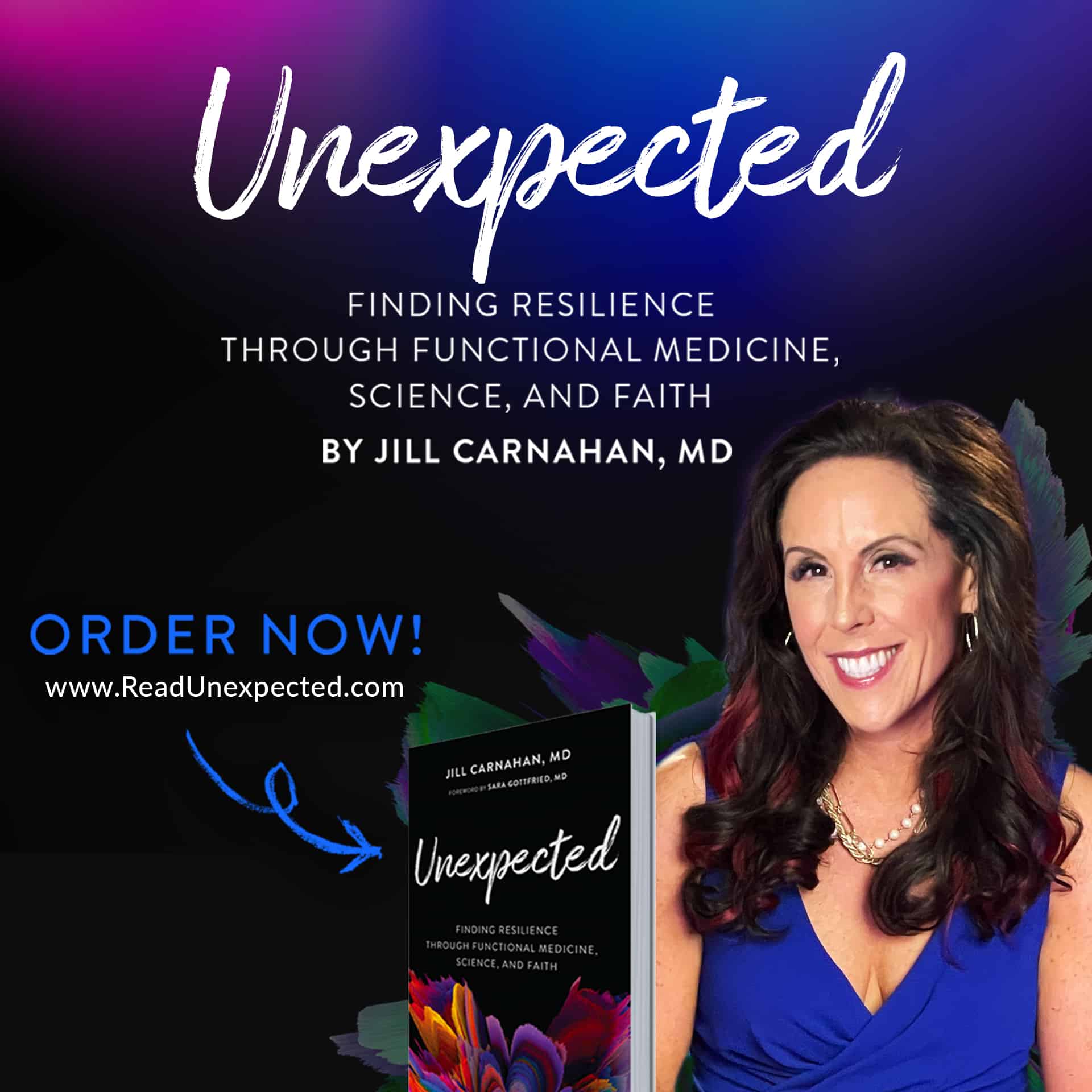


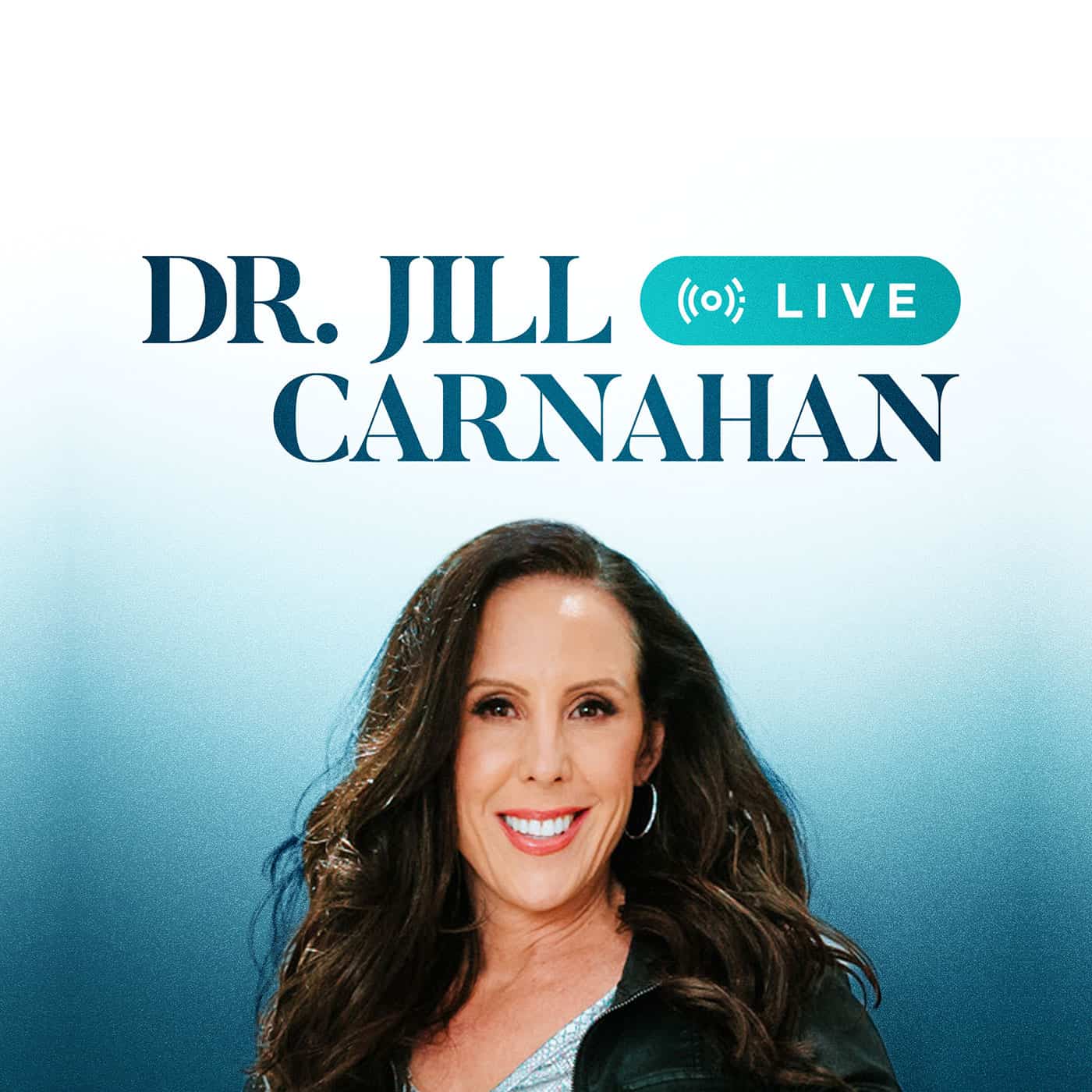
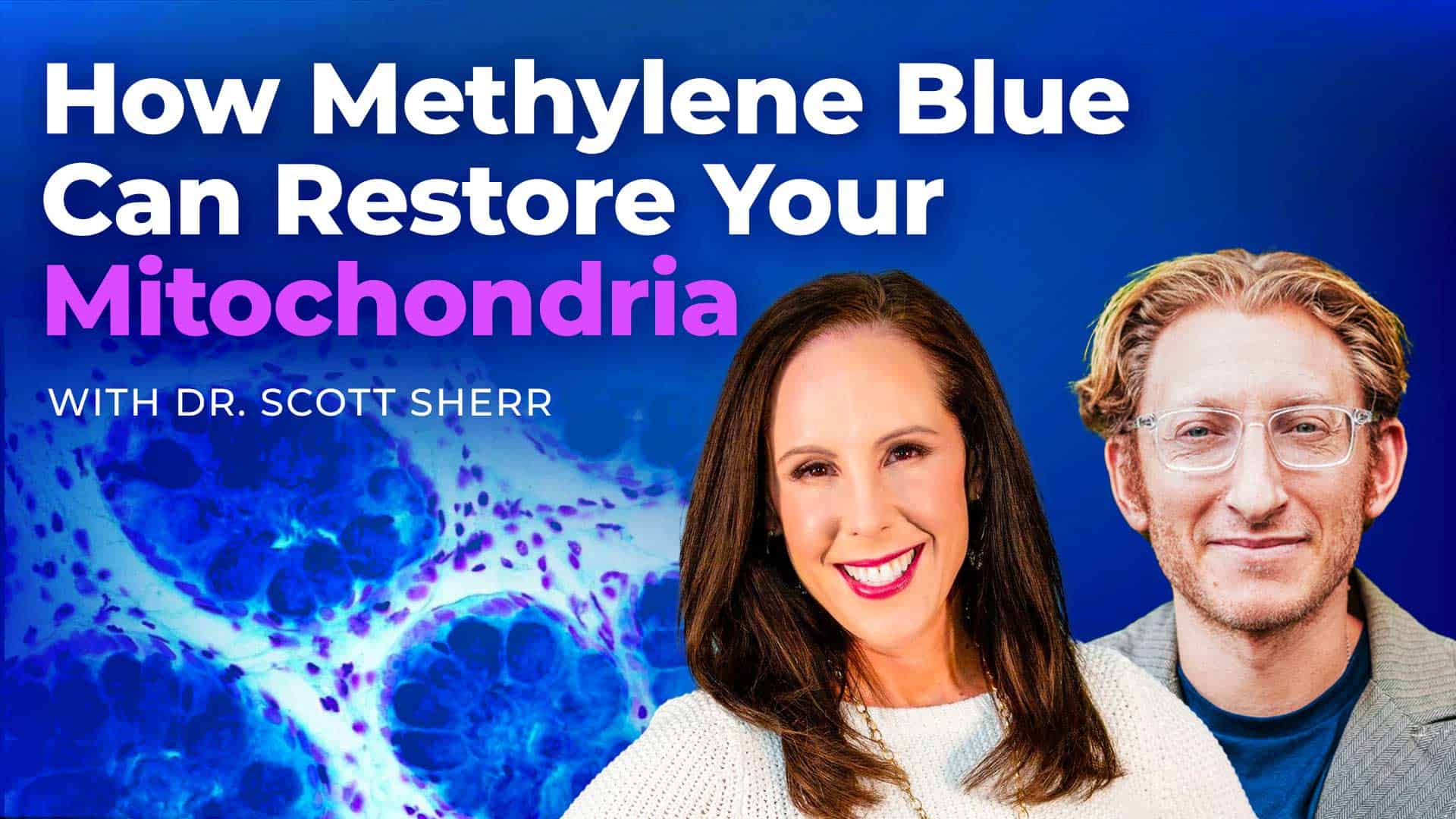
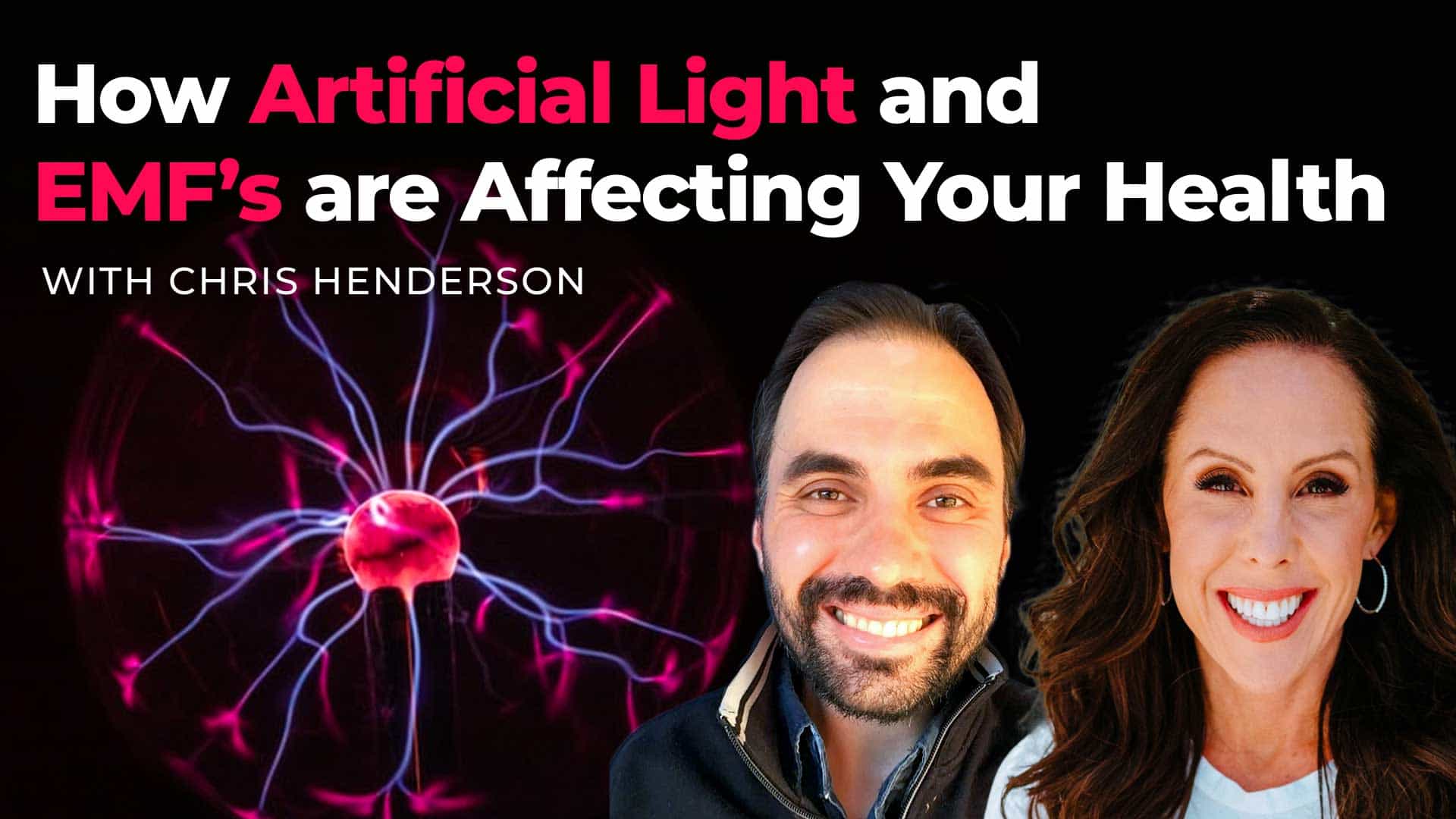
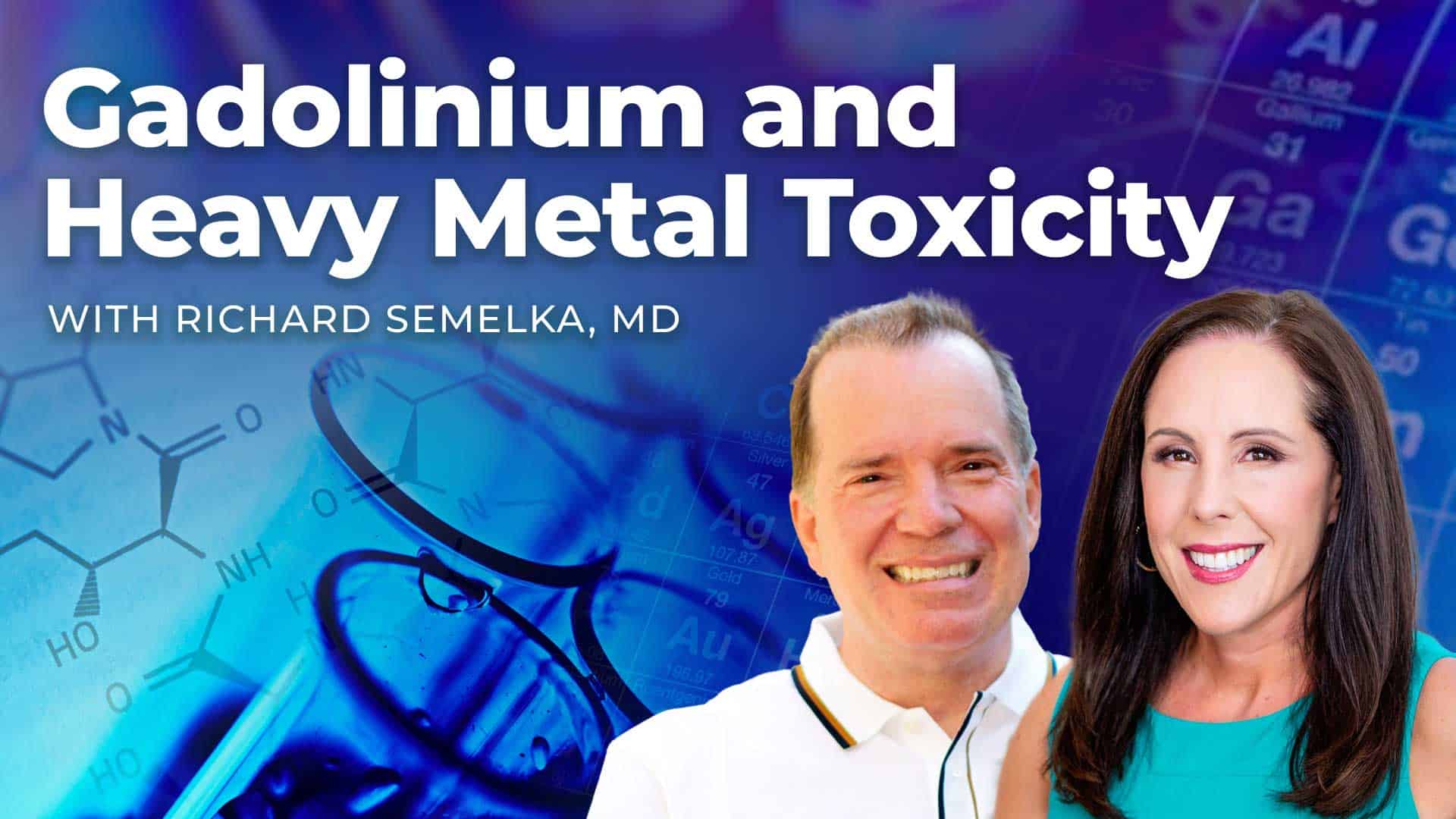
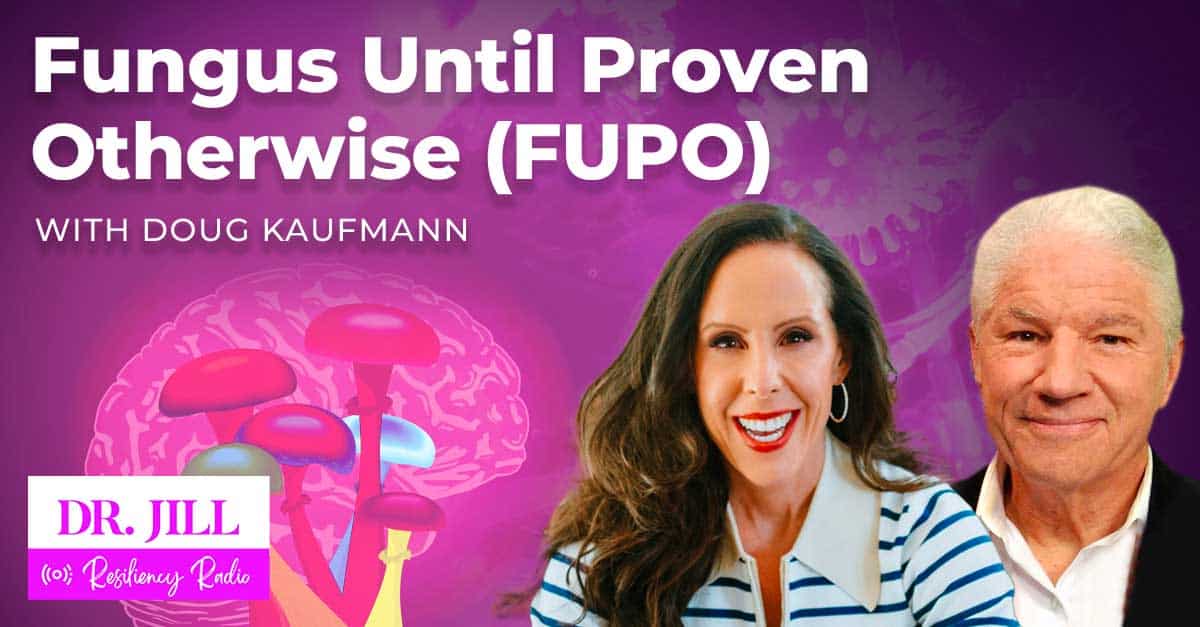



Share: